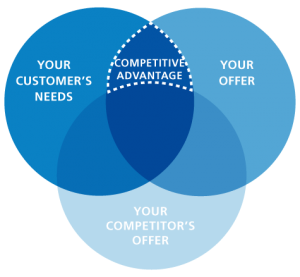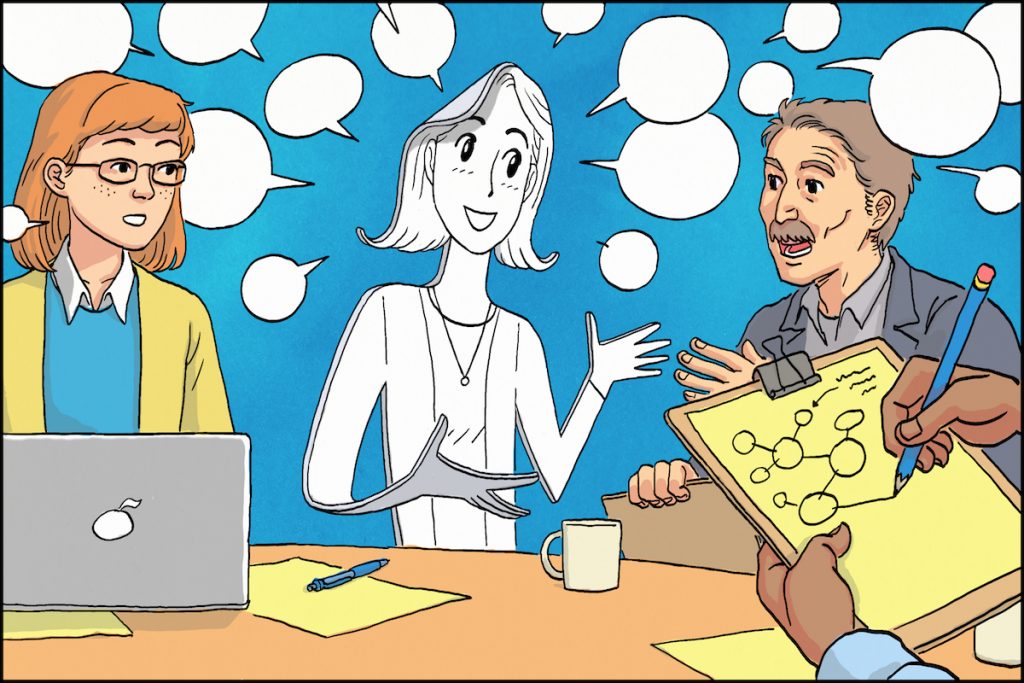So you think you had a great idea? Sally here says you didn’t.
What are customer personas, and why should I care?
One fundamental problem organizations have when formulating a marketing strategy is the inability of those within an organization to really look at what they are doing from the perspective of the outside.

A customer (or consumer) persona is a tool that helps marketers bridge this difficult-to-traverse chasm between customer experience and expectation on one hand, and the product or service provider’s unconscious assumptions on the other.
Customer personas, or user personas, were first created by web design companies to test their websites. It turns out, if done well, personas are very useful when testing all kinds of marketing ideas, products, and activities.
A persona is a kind of mental model—an imaginary person with a name, history, and story who has a way of doing things.
A persona is a kind of mental model—an imaginary person with a name, history, and story who has a way of doing things. A persona should have enough psychological detail to allow you to conveniently step over to the persona’s view and see your products and services from her perspective. A persona can function almost like another person in the room when making a decision—it is “Sally.” She looks at what you’re doing from her particular and very specific vantage point, pointing out flaws and benefits for her.
Did I mention this was really useful?
We recently created what we thought would be the ideal customer persona for a commercial client. The persona was strong and rich in detail. When we got to the point where SHE was told to tell the story of our client’s product to her friends, she wouldn’t. This exercise showed us as plain as day what none of us could see: that she didn’t even really like the product as it was then conceived!
This exercise showed us as plain as day what none of us could see.
We could have gone ahead with our assumptions about the product, even focus tested, and spent a lot of money marketing it only to find this same fundamental problem a year—and a whole lot of money—later. Our imaginary person in the room—our persona—helped us see a major flaw in our plan well before anything got produced.
Creating personas can be a bit of a challenge. While you are in the middle of it, it can even seem wasteful, but here, for example, it ultimately helped us find a new version of the product that actually would make this important class of customers happy (not to mention nearly everyone else).
Creating personas ultimately helped us find a new version of the product that would make an important class of customers happy.
The final test is always with real people, of course, but this is a very important and useful step.
Perfunctory personas are easy and NOT particularly useful, but if given the choice between a perfunctory one or none at all, I’d still take the former.
What makes a good persona?
In order to create a good customer persona you have to really get into her head. It’s a little like method acting and getting into character.
What will Sally think? How is this thing we want to do meeting HER needs? Real life consumer insight is critical, but even asking the right questions at this early stage can be difficult without first trying to see as the customer sees, speak as she speaks, fear as she fears.
It takes one to two hours of concentrated effort and willing participants to create a good persona. Sometimes the process can be frustrating: “What purpose do all these personal details serve?” or “How are Sally’s fears relevant to our marketing efforts?”
These details have two functions:
How is this thing we want to do meeting HER needs?
First, they help force the creators to get into character. Specificity is a good way to push the process deep enough to facilitate genuine understanding of the thoughts, feelings, and behaviors of your customers. We are not all naturally good at this, and it’s important for a persona’s effectiveness.
Second, it can help you find previously undetected tactical opportunities for your product, service, or institution. These can make what you do more useful and relevant in your customer’s lives. Where does your product or service constructively intersect with what Sally does or what Sally cares about? Once uncovered, these are very valuable insights.
Customer personas help you ask better questions.
Good questions can, in turn, lead you to a genuine trim tab, or more traditionally, they help you pre-test ideas or products. None of this is a substitute for real-world testing, but it is a critically valuable tool in the process I recently called the science and art of marketing. Personas will help you plan better, think better, and thus save you money.
I have yet to do a deep customer persona exercise that is ALL fun and no work. I also have yet to create a customer persona that does not serve a very useful purpose.
So, have you talked to your ideal customer persona today?
You should.
If you want help getting this sorted out for your organization or product now, it’s a key part of our Marketing Strategy Workshops.
Illustration for Tronvig Group by Sage Einarsen



What a great article… it’s so easy now to lose focus on the importance of WHO we are targeting in marketing given all of the huge shifts that are out there from social media, mobile etc. loved reading this.
Wow! What a great idea. I can see it be tedious and make us articulate everything we’d rather just assume, but I can see how it would add great value when developing a marketing plan.